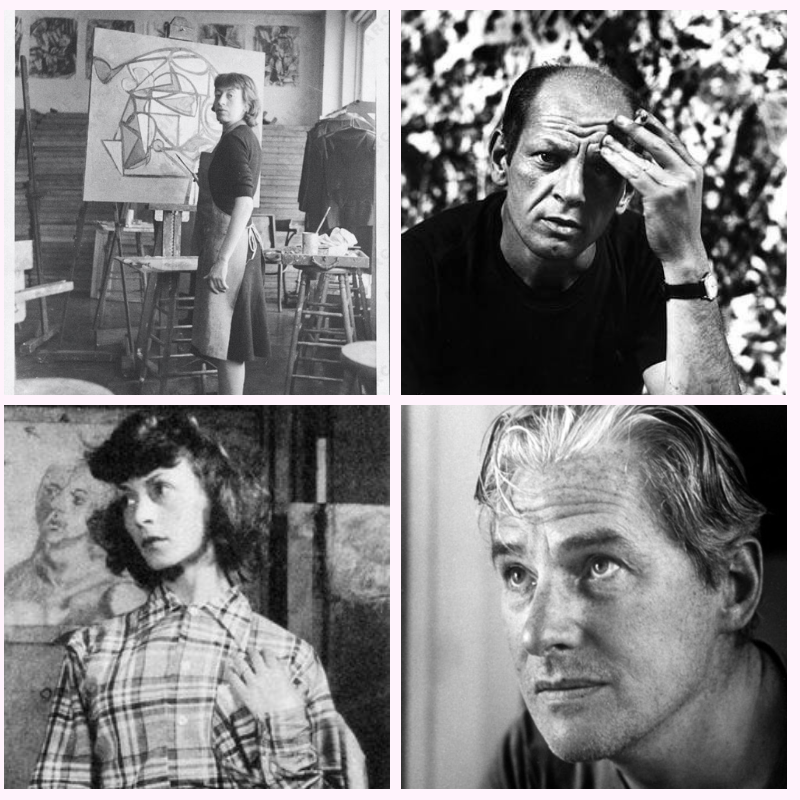CURIOUS CALLBACK: Episode #36: Rivals- Turner vs. Constable (Season 3, Episode 5)
This episode is sponsored by The Great Courses Plus. Get three months of unlimited access to over 10,000 lectures presented by engaging, award-winning experts on everything from art to physics, interior design and world languages— all for just $30. Sign up today at thegreatcoursesplus.com/ART.
In 19th century England, landscape painting transitioned into being something lovely and comparatively calm, and transformed into a personal and stylistic battleground. Landscape: pristine and idealized, or rough, ready, and turbulent? Which one would better express the heart of 19th century British painting?
Please SUBSCRIBE and REVIEW our show on Apple Podcasts!
SPONSORS:
The Great Courses Plus: Get three months of unlimited access for just $30
Prose: get your personalized hair consultation and 20% off your first order
Episode Credits
This is the second of three episodes in collaboration with Sartle. Sartle encourages you to see art history differently, and they have a plethora of incredibly fun and informative videos, blog posts, and articles on their website.
Production and Editing by Kaboonki. Theme music by Alex Davis. Graphic Design by Dave Rainey. Social media assistance by Emily Crockett and Caroline Haller.
ArtCurious is sponsored by Anchorlight, an interdisciplinary creative space, founded with the intent of fostering artists, designers, and craftspeople at varying stages of their development. Home to artist studios, residency opportunities, and exhibition space Anchorlight encourages mentorship and the cross-pollination of skills among creatives in the Triangle.
Additional music credits
"Western Tanager" by Chad Crouch is licensed under BY-NC 3.0; "Not the end" by Alan Špiljak is licensed under BY-NC-ND 4.0; "More Than Friendship - Geglaettet (ID 814)" by Lobo Loco is licensed under BY-NC-ND 4.0; "Fuzzy Lines" by Yan Terrian is licensed under BY-SA 4.0; "Full of Stars" by Philipp Weigl is licensed under BY 4.0; "Phase 1" by Xylo-Ziko is licensed under BY-NC-SA 4.0; "Whimsical Theme #2" by David Hilowitz is licensed under BY-NC 4.0. Ad Music: "Dans la piscine" by Frederic Lardon feat Laura Palmée is licensed under CC0 1.0 Universal (Prose)
Recommended Reading
Please note that ArtCurious is a participant in the Bookshop.org Affiliate Program, an affiliate advertising program designed to provide a means for sites to earn advertising fees by advertising and linking to bookshop.org. This is all done at no cost to you, and serves as a means to help our show and independent bookstores. Click on the list below and thank you for your purchases!
Links and further resources
The Daily Mail: "Why Britain's Two Greatest Painters Hated Each Other's Guts: And now Turner and Constable Are Going Toe-to-Toe Once More"
The Telegraph: "JMW Turner's Feud with John Constable Unveiled at Tate Britain"
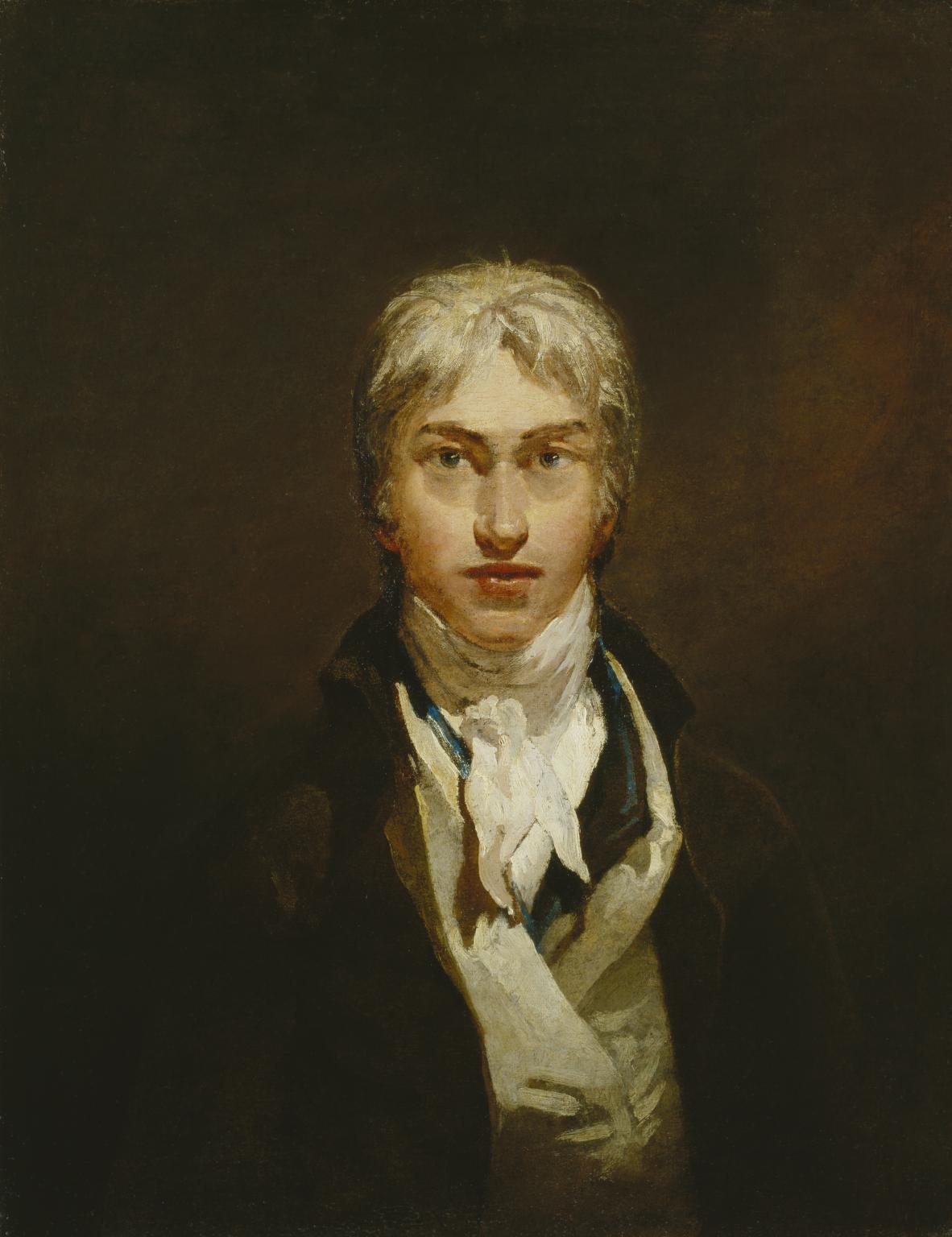

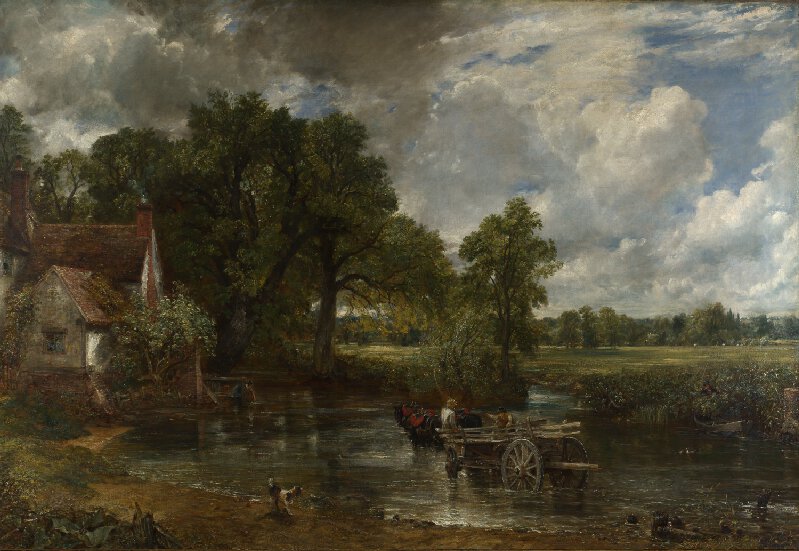
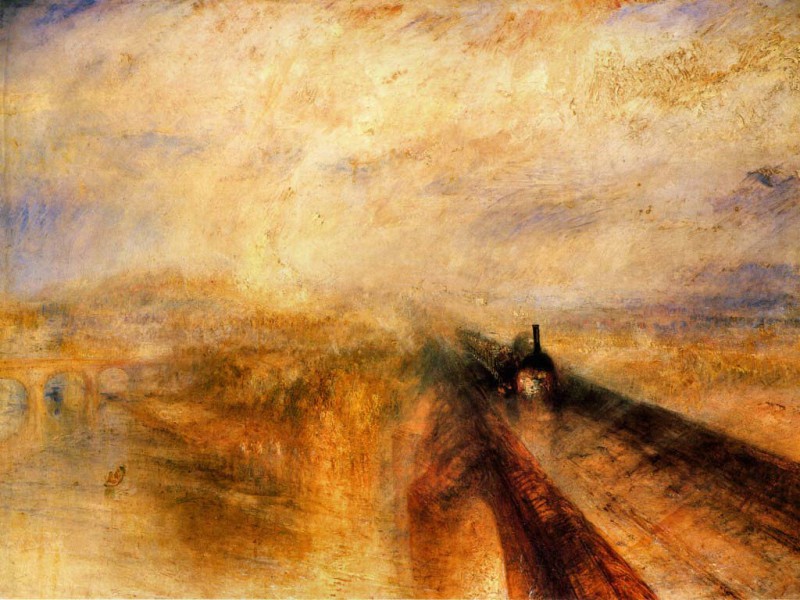
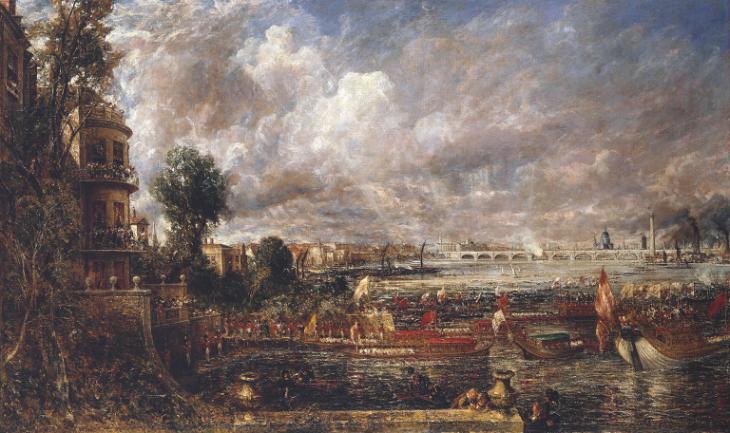

Episode Transcript
Landscape paintings. To many of us, it seems like there’s almost nothing seriously dramatic going on there. Things are beautiful, bucolic even, perhaps enlivened by a smattering of fluffy clouds or a sweet pink sunset. Though not my absolute personal favorite of painting genres, I’m still drawn to them as much as the next person. When I see one that I particularly enjoy, I almost wish that I could jump into the paint and swirl around in the landscape itself, like I’m in one of Bert’s chalk drawings in Mary Poppins. Even I must admit that there is something so engaging about a nice landscape. But in 19th century England, landscape painting transitioned into being something lovely and comparatively calm, and transformed into a personal and stylistic battleground. Landscape: pristine and idealized, or rough, ready, and turbulent? Which one would better express the heart of 19th century British painting?
Some people think that visual art is dry, boring, lifeless. But the stories behind those paintings, sculptures, drawings and photographs are weirder, crazier, or more fun than you can imagine. And today, we are continuing our series on great rivalries in art history with two English gentlemen whose thoughts about landscape couldn’t be more different—and what that difference means for each artist’s legacy. This is the story of the battle between Turner and Constable. Welcome to the ArtCurious Podcast, exploring the unexpected, the slightly odd, and the strangely wonderful in Art History. I'm Jennifer Dasal.
If you take a survey course of 19th century painting, I’d almost guarantee that your art history professor would spend the majority of his or her time positioned squarely in France- because, let’s be honest, a lot of the biggest innovations of that country brought on the birth of what we know as Modernism today. France begat Gustave Courbet, Edouard Manet (himself, by the way, the subject of an upcoming episode this season), and the majority of the Impressionists and Post-Impressionists, like Claude Monet, Auguste Renoir, and Paul Cezanne. And I have to admit my own personal preference here, as I was a specialist in 19th century French Painting long before I transitioned into contemporary art as my professional bread-and-butter. But it’s true— France tends to get most of the 19th century art glory. But that doesn’t mean that there weren’t huge things brewing in other countries. There were— and England was one of those locations.
In some ways, the environment of the late 18th and early 19th centuries in England made for an atmosphere perfect for quiet exploration of something just like landscape painting. Unlike France, which transitioned from Revolution to Reign of Terror to the uncertainty of the Napoleonic period, England during the same time was… chill, really, at least in comparison. It was stable, and in terms of the art world, it was pretty established. An important aspect of this was the training and structure that was available through the founding of The Royal Academy of Arts, which came into being in 1768 via a personal degree from King George the Third, specifically to promote Britain as a stronghold of arts, design, exhibitions, and art education— a pretty powerful combination. This ended up having several lasting effects— the first being that artists, all of a sudden, were raised in status as important and valued members of society, and at the same time, the arts themselves became highly valued and sought after, too— a fantastic way of being that I only wish was true of my own country in this very day.
It was into this artsy, supportive world that Joseph Mallord William Turner was born in 1775 in Covent Garden, London, to William Turner, a barber and wigmaker, and his wife Mary, who came from a family of butchers. A funny thing about Turner is that his actual birth date has been disputed ever since his own lifetime, partially because of Turner’s own personal myth-making and self-aggrandizement. He claimed he was born on April 23rd, a birthday he would have shared with one of the most famous creative forces in all of British history— William Shakespeare. Many historians caution us today to take this information with a grain of salt, though, because documents do survive that show that Turner was baptized on May 14, 1775, and it would have been highly unusual to baptize a child nearly 4 weeks after his birth when infant mortality was so insanely high at this time.
Turner’s family life, at least early on, wasn’t the most wonderful thing— his own sister, and only sibling, died at the ridiculously young age of four when Turner himself was only eight— a truly scarring event if there ever was one. Turner’s own mother caused some problems as well for the young boy because she was prone to frequent fits of uncontrollable rage, eventually being institutionalized in 1799 through the rest of her life. Because of her unstable mental health, Turner’s parents sent him away to live with one of his uncles at the age of 10, and it was during that period, while attending school, that his uncle and teachers began noticing that the young child had a propensity for drawing. And he drew really well. By two years later— 1787, when the artist was 12 years old— he was already creating his earliest paintings and drawings, signed and dated by the artist himself. To me, this stipulates that Turner was already aware of how good he was— he felt enough pride in his works to make sure that his name was attached to them. And he was right, too, because he actually sold his very first drawings that same year. His dad— his biggest fan from the very beginning— displayed said drawings in his shop, where they sold for a few shillings. Pretty awesome for a tween, right?
Turner’s rise in the art world happened rather precociously. In 1789 at the age of 14, he began his studies at the plaster academy, where he learned to draw from plaster casts of classical sculptures—a very typical, and rather important, way to get an early grip on form, shading, and the like. After only one year of study, one of his watercolors was accepted into the Royal Academy’s summer exhibition— and Turner’s ambitions turned quickly to the Academy itself. At the very beginning, Turner aspired to be an architect, and his drafting skills were noticeable enough already that a local London architect named Thomas Hardwick, with whom Turner was apprenticing, was so impressed that he recommended the Royal Academy to Turner. He applied and was accepted— it was that easy for him. And with that, he was officially on his way. He was just 17 years old.
One year after Turner was born, another child entered the world who was also destined to become a great painter. John Constable was born in 1776 to Golding Constable, a wealthy landowning farmer, miller, and corn merchant in Suffolk. John Constable had more means than Turner did— but even so, that didn’t mean that an easy road to the arts was in front of him. It was expected early on that Constable would follow his family into the corn trade, but the business bored him. What excited him, though, was one particular day when, at the age of 19, he met a wealthy patron of the arts named Sir George Beaumont who showed him one of his prized possessions: a painting by a great 17th century French painter renowned for his landscapes—Claude Lorrain. Constable was floored— and he determined that this was his life’s direction. He would become a painter. But it took time. Unlike Turner, who showed proficiency in drawing from a very early age, Constable took a really, really long time to get his act together. Even a couple of years after meeting George Beaumont and getting acquainted with Claude Lorrain’s painting, Constable was still toiling away at finding a quote-unquote “suitable” job that would be both profitable and socially acceptable to his family. But eventually, Constable won the battle— four years after determining to become a painter, he was admitted to the Royal Academy in 1800 at the age of 22– with his kindly father agreeing to foot the bill. For all the differences in Turner and Constable’s lives, that one thing they certainly had in common: totally devoted and supportive dads.
Whereas J.M.W. Turner sped quickly and promisingly through his studies at the Royal Academy like a prize stallion, John Constable was a different breed— more like a plodding farm horse. In total, he would spend eleven years studying at the Academy, which is… longer than average, to say the least. It seems that from the very beginning, he wasn’t particularly ambitious. He was in no hurry to complete his training, and unlike other artists who were eager to make the Grand Tour of Europe to set their sights on the world’s great masterpieces, Constable was content to just stick around his home, quietly painting the tranquil pastoral scenes he found in the East Anglia of his youth, a part of England that had found little favor with other romanticists, who preferred wild moors and mountains to the flat and placid region that would, later, be nicknamed “Constable country.” That was what he wanted to represent. And when I say represent, I mean really, really represent, not interpret: his goal was to faithfully reproduce nature— making things look realistic and without the kind of artsy bells and whistles which was slowly gaining favor at the time. It strikes me as two things simultaneously: first, it seems terribly old-fashioned. But at the same time, it’s also kinda badass, like Constable was sticking his nose up at trends and saying, I know what I like, and I’m not going to kowtow to anyone— popularity be damned.
Truly this is one of the ways that Constable is immediately and noticeably different than Turner. Turner progressed into his own signature style that would win many admirers as well as detractors early on. He was a true romantic, in the 18th century definition of the word— meaning that his goal was not to accurately represent nature but rather to portray the feelings that you’d experience while viewing your natural surroundings. He painted with great energy, though his critics often complained of an “indistinctness” in his work, and Academy president Benjamin West derided his Thames paintings of 1807 as full of, quote, “crude blotches.” His work is characterized, even today, as having a lot of long, painterly brushstrokes and a wonderful atmosphere. He found inspiration in shipwrecks, ruins, fires, sunlight and fog, among many other natural phenomena. And he traveled extensively in order to expose himself to these kinds of things— journeying not only throughout the British Isles, but also making the voyage to mainland Europe. It’s almost like Turner was the anti-Constable, and Constable, of course, was the anti-Turner.
Unfortunately, this statement proved to be correct in terms of financial gain, too. In the 1790s, while Turner was still in his 20s, the art market in Britain was on a substantial uptick, and buyers were hot for landscapes. Turner was not only talented, but also savvy: he could, and would, create almost anything for public consumption: marinescapes, antiquarian motifs, topographical maps, and architectural watercolors— all on top of his popular landscapes, and wealthy patrons would just lap them up. In this way, he was able to pay, single-handedly, for his academy training. And it never really let up, this literal good fortune. As he grew older, he became considerably wealthy, shrewdly investing in property and establishing his own gallery to promote his work. Not only did he sell many paintings to wealthy patrons, he also produced mezzotints of sketches on his extensive travels that were compiled in books that sold very well to middle-class readers.
But John Constable was not so lucky. Even though he tried to make ends meet by doing portraits on commission, it really didn’t do him much good, and he only sold twenty paintings in England during his lifetime. He finally did come into some cash when he inherited a portion of his father’s fortune, but Constable was notoriously bad with money, and he mishandled it frequently. It was quite the contrast to Turner, who had once dined rather extravagantly with French King Louis-Philippe in Switzerland and wherein the king presented him with a marvelous golden snuff box.
Let’s also consider both men’s outward-facing success within the Royal Academy itself, as that adds another element of complete and total difference. We’ve already mentioned that Constable puttered along in his studies, not completing his final courses in life drawing at the Academy until 11 years after his acceptance there. Turner, on the other hand, was a prodigy who sped through all of his courses in just under three years. And this being Turner that we’re talking about, he showed no signs of slowing down. In 1802, Turner was granted full Academician status, which was like an official decree of his talent and genius. He was appointed Professor of Perspective at the Academy in 1808, a position which gave him immense pride, and he began teaching fully in 1811, and would remain a professor until 1837. He even was elected acting President of the Royal Academy in 1845, when the sitting president was taken ill, and he ended up holding that position down for a whole year until this own health started to fail, and he stepped down. Now, let’s compare that with Constable. Constable was also granted full Academician status, like Turner. But while Turner achieved this in 1802 at the age of 27, Constable didn’t get there until 1829. He was 52 years old, and in the last decade of his life. Slow and steady wins the race, sometimes, but man, that doesn’t seem to be accurate in this case.
I haven’t even finished contrasting Turner and Constable here. There’s the fact that Turner never married and instead had a couple of mistresses, one of whom probably bore him two children at least, and there seem to have been difficulties in these relationships. Constable, on the other hand, very happily married his childhood sweetheart, Maria Bicknell, and together they had seven children and remained deeply in love until Maria’s death from tuberculosis in 1826. From all accounts, Constable was utterly bereft after Maria died, and he ended up wearing black for the rest of his life and suffering from bouts of anxiety without her reassuring presence.
All of this to say one simple thing: despite both being very interested in landscape painting primarily, they could not have pursued it, and their lives, in more different a fashion. And thus, it probably shouldn’t surprise us to know that these two men would really rub each other the wrong way. Turner’s superstar status, money, and considerable talent would certainly evoke jealousy in someone like Constable, who, though talented too, was just not at the same level and thus didn’t have the same amount of critical and financial success. Constable may have been perturbed by Turner’s particular style of painting, as well, because it was the total opposite of how he wanted his landscapes to be— Turner’s were loud, bold, and experimental. But it also appears that he admired Turner, too. Constable’s comments, at various times, seem to demonstrate some kind of inner conflict over what he thought of his contemporary. He would often praise Turner in public, but then would turn around and bash him in private. And yet, even that is not consistent. Example number one: He was reportedly taken aback when his fellow students at the Academy, most of who were younger than him, would praise Turner to Constable. He was surprised, apparently, that they thought his work good and not lacking substance, as Constable himself believed. And yet at another date, he reportedly commented to a mutual friend, quote, “Did you ever see a picture by Turner and not wish to possess it?” Later on he even praised Turner’s work in 1826 as quote, “Golden visions, glorious and beautiful.” And during one key evening where he was seated next to Turner at an Academy dinner, he enjoyed himself so much that he reportedly returned home to Maria and noted that he was, quote, “a good deal entertained with Turner… he is uncouth but has a wonderful range of mind.”
All of this back-and-forth seems, from the outside, as a good old case of animosity inspired, primarily, by jealousy. It’s totally possible that he was genuinely in awe of his rival’s considerable talent, which was obvious enough to enthrall their colleagues and compatriots, So it’s likely that he felt compelled to praise him in public not only to cover up his true feelings, and to also seem “with it” and in agreement with the general consensus. But no matter if he loved Turner’s work or hated it, one thing is absolutely certain: Constable was obsessed with Turner’s work.
Now here’s one area where Turner and Constable were hugely alike: they were both fascinated by Turner’s career. Unlike Constable, though, Turner didn’t talk about his own artwork a lot, nor did he frequently speak ill of others. He did, however, want his art to receive the glory it was due— and if it didn’t get that glory, oh boy, there would be hell to pay. This brings us to the first big altercation between Constable and Turner, which occurred in 1831 during the Summer Exhibition at the Royal Academy— noted as the most important art event of the year. If an artist displayed a truly excellent work, the critical attention and praise he or she received could lead to important commissions, huge profits, and could basically made or break an artist’s career. And in 1831, Constable himself had some sway in this matter. That year, he was on the hanging committee of the exhibition, and he was proud— really proud— proud enough that he went about telling everyone that would listen how he would faithfully discharge this sacred duty, giving all exhibitors the best possible location for their works of art. But that didn’t mean that he was a neutral party, and besides, he had his own painting to think about. So, naturally, Constable found a prominent, central location to display his own work, a painting titled Salisbury Cathedral. But to grab this primo spot, he had to displace a work of art that had already been hung in that same location. Got a guess as to whose work was there? Oh yes. Turner had a painting there, but Constable moved it to a sad little corner of the exhibition to make room for his own canvas. Naturally, when Turner came to the galleries to see the show, he was livid, and he made a big old scene, confronting Constable about the crummy placement of his painting. Several eyewitnesses to this scene noted that Constable, in trying to save face, spluttered out some excuse about wanting to give Turner’s painting a space with better light. But Turner was no dummy, and he immediately countered by saying, quote, “Yes, but then why did you place your own there?” Touché, Turner. And there was really nothing else that Constable could say to that, so he was just left to wriggle in his embarrassment while Turner groused on and on to everyone who would listen, and he refused to let the subject drop all evening.
If you think that the 1831 Summer Exhibition conflict between these two artists was uncomfortably bad, then just wait until you hear what happened the next year. The 1832 Summer Exhibition was the ultimate showdown between Constable and Turner, and a fight from which Constable was said to have never recovered. He was very ambitious in his hopes for that year and he intended to display a work titled The Opening of Waterloo Bridge, a massive seven-foot painting that he had lovingly labored over for fifteen years. Fifteen years! But he felt positive about it, sure that it would garner a high amount of accolades and critical praise... that is, until he heard that the hanging committee intended to place it right next to a painting by JMW Turner. (I mean, if that isn’t karmic retribution for his own sneaky doings on the hanging committee the year before, I don’t know what is.) The painting that Turner had selected for exhibition, called Helvoetsluys, was a tonal seascape with Dutch ships floating in a harbor, and when Constable first viewed it, he immediately felt a sigh of relief. It was a largely colorless composition, really just blues, grays, and tans, and Constable felt vindicated. Still, he wanted to be sure that he put his best foot forward, so he went to the gallery in advance of the exhibition’s opening to view the artwork’s placement and to make final tweaks to the composition, just to make it pop a bit more next to the bland Turner. But Turner had already experienced Constable’s sneakiness firsthand, so he arrived early, too, and witnessed Constable hard at work trying to one-up him. So Turner was determined to do the same, and in one swift, confounding move, he pulled out a container of bright red painting and added a single daub of it to the center of the roiling sea. And with that, he disappeared.
I can only imagine what Constable must have thought— was Turner off his rocker? What a mess, that one dollop of red paint. Sure, it was a bright color, but… what was it? And why was it there? Oh well, he must have thought, and he probably turned around to continue his last minute touch-ups in peace and quiet. That is, until Turner appeared only minutes before the deadline for all painting and touch-ups to be completed. And everyone froze— and stared, as Turner silently walked up to his painting, pulled out a handkerchief, and quickly rubbed the red daub of paint around until he formed it into the shape of one small, perfect buoy.
A bright red buoy— that’s it— but that single element, and its dramatic creation, electrified the entire Summer Exhibition, and left Constable famously declaring about Turner, quote, “He has been here, and he fired a gun.” To Constable, it felt like career assassination, because it was now his painting that suffered by comparison, looking less powerful and striking that Turner’s. What made Turner’s work so great? It showed, in comparison to Constable’s painting, that true artistry is about knowing when enough is enough, when all you need is just a little touch, when restraint can have a bigger effect on a viewer than excess can. Constable’s piece looked busy and overdone in comparison. Turner’s looked sparkling and magnificent. Constable is said to have looked back on this event as the moment that wrecked his career— and he never forgave Turner for it.
Constable’s insistence that the 1832 showdown changed his career trajectory forever is probably a bit too dramatic, because even though he never achieved the same heights and successes as Turner did, it’s not like he has fallen into oblivion. His faithful reproductions of nature won him admirers, especially in France, where his 1821 work The Hay Wain won a gold medal at the Paris Salon of 1824. From the beginning, French artists took to Constable’s work more than his fellow English artists ever would, with the great romantic painter Eugene Delacroix altering his style in imitation of Constable’s, and even going so far as to pay a visit to the English painter when he visited London in 1825. French Romantics like Delacroix and Géricault admired his strikingly natural transcription of the real world from the outset, and Constable’s work is thought to have influenced the Barbizon school and later, the French Impressionists.
But you could say similar things about Turner, too— especially when it comes to his long-lasting effects on art. His own atmospheric takes on land and seascapes is a direct precursor to Monet’s first important work, Impression: Sunrise, the painting that would single-handedly start the Impressionist movement. He was one of the first proponents of sketching and painting en plein air, or out in the open landscape, which would become a touchstone for practically all the Impressionists and Post-Impressionists, and beyond. He set a standard that has had lasting effects. And as much as I hate to admit it, today one finds Constable’s artwork more frequently on cookie tins than in surveys on the top fifty most important artists throughout history, a list on which you will be far more likely to discover Turner. But you can’t deny that they both did something admirable and noticeable— together, they used painting as a way to celebrate, and even worship, the natural world around them. At a time when landscape was looked down upon by many within the Royal Academy, which prized history painting above all else, Turner and Constable both claimed new dignity for the genre that would become a hallmark of 19th century painting.
Next time on the show, we’re uncovering the story of one of ArtCurious’s favorite artists and her supposed rival- only there was no rival at all. It’s a tale about public opinion and its influences, and it's coming up in two weeks. Don’t miss it.
Thank you for listening to this first episode of the third season of the ArtCurious Podcast. This episode was written, produced, and narrated by me, Jennifer Dasal, in association with Sartle.com, who provided much of the research for this episode. This is the second of three episodes this season that we are doing in collaborating with Sartle. Sartle encourages you to see art history differently, and they have a plethora of incredibly fun and informative videos, blog posts, and articles on their website. Check it out at sartle.com.
Our theme music is by Alex Davis at alexdavismusic.com, and social media help is by Emily Crockett. Our production and editorial services are provided by Kaboonki Creative. Video. Content. Ideas. Learn more at kaboonki.com.
The ArtCurious Podcast is sponsored primarily by Anchorlight. Anchorlight is an interdisciplinary creative space, founded to foster artists, designers, and craftspeople at varying stages of their development. Home to studios, residency opportunities, and exhibition spaces, Anchorlight encourages mentorship and the cross-pollination of skills among creatives in the Triangle. please visit anchorlightraleigh.com. Thank you so much to the generous folks at Anchorlight for funding this third season.
The ArtCurious Podcast is also fiscally sponsored by VAE Raleigh, a 501c3 nonprofit creativity incubator. This means that you can donate to the show and it is fully tax-deductible! Follow the “Donate” links at our website for more details, and thank you.
As always, you can also go to our website for images, information and links to our previous episodes. That site is artcuriouspodcast.com. And you can contact us via the website, email us at artcuriouspodcast@gmail.com, or find us on Facebook, Twitter and Instagram at artcuriouspod. --and remember to subscribe and review us on Apple Podcasts and tell anyone you want about the show. Check back in two weeks as we continue to explore the unexpected, the slightly odd, and the strangely wonderful in rivalries of art history.







